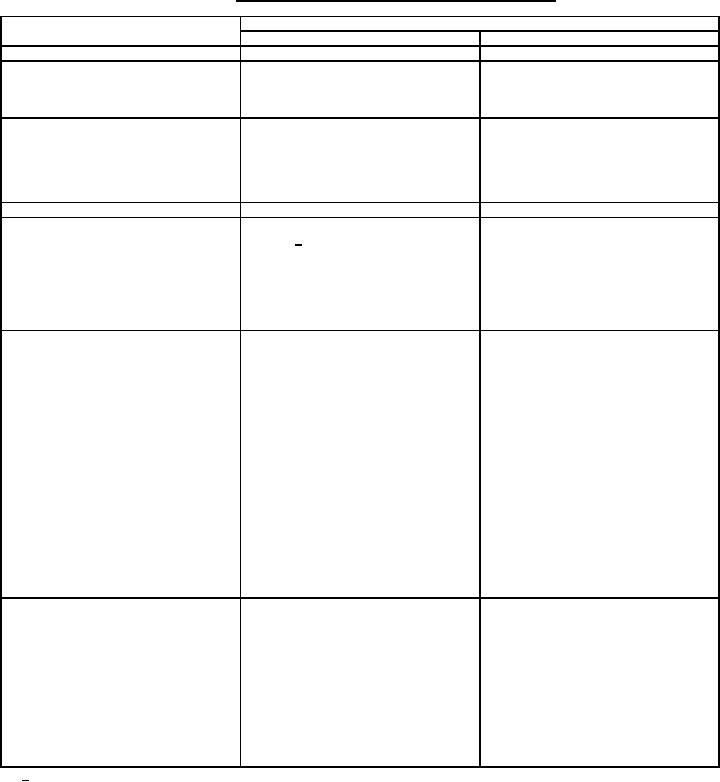
MIL-DTL-12606E
TABLE VI. Classification of defects for visual and mechanical examination.
Defect type
Classification
Major
Minor
Dimensions
Dimensions not as specified.
---
Materials and finish
Materials not as specified.
Scratches, cuts, abrasions, etc., causing
Wrong or incomplete finish.
exposure of base metal, or relatively small
Large amounts of flaking, peeling, or
amount of flaking, peeling, or chipping.
chipping of finish.
Parts
Missing parts.
Defective parts which would reduce
Inoperative, improperly assembled, or
efficiency of use, but not cause failure in
defective parts which could cause the
service.
loudspeaker to fail in service.
Cracks or chipped surfaces having no
Wrong parts.
effect on the functioning, assembly,
maintenance, or life of the loudspeaker.
Marking
Marking missing, illegible, or incorrect.
Marking dirty or smudged, but legible.
Foreign objects
Any metallic foreign object, not firmly
Any metallic or nonmetallic foreign object,
attached 1/, which could cause a short
which affects appearance but which could
circuit, or acoustical malfunctioning of the
not cause acoustical malfunctioning of the
loudspeaker.
loudspeaker.
Any nonmetallic foreign object such as
insulation, dirt, or phenolic chips which
could cause acoustical malfunctioning of
the loudspeaker.
Improper wrap - 1/2 turn or more, but less
Soldering
Improper wrap - less than ½ turn.
than one turn.
Unsoldered joint-solder not applied where
Excess solder - Build-up solder on joint
intended.
greater than necessary for good soldering,
Insufficient solder - Minimum dimension of
usually resulting in obliteration of wire
solder bridge less than twice the diameter
contour.
of the wire of less than 3/32 inch,
whichever is greater. Entire area of contact Cold solder joint - Chalky appearance,
lacks metallic luster, presents rough "pile-
between wire and terminal not joined by
up" appearance; no relative action between
solder bridge,
wire and solder upon pick application.
Cold solder joint - Chalky appearance,
lacks metallic luster, presents rough "pile-
up" appearance; movement of wire or
solder upon pick application.
Rosin joint - Presence of excess rosin;
relative movement of wire or solder upon
pick application.
Insulation in terminal hole - Solder over
insulation; no appearance of visible wire
contour.
Broken strands - 20 percent or less. In a 7-
Wiring
Broken strands - More than 20 percent;
strand conductor, 2 broken strands.
except in a 70-strand conductor, more than
Insulation burned, abrased, pinched, or
2 broken strands.
deteriorated, with exposure of bare wire, but
Insulation burned, abrased, pinched, or
short circuit not possible.
deteriorated between two or more
Taut wire - Slight stress on conductor, but
conductors, resulting in a potential short
not possibility of subsequent breakage.
circuit.
Taut wire - Wire exhibits no slack and
subsequent breakage may occur due to
stress on terminal or part.
Insulation frayed to the extent that a
potential short circuit exits.
1/ Foreign objects that cannot be dislodged by the moderate application of pressure with a pick or spudger shall be considered firmly
attached.
14
For Parts Inquires call Parts Hangar, Inc (727) 493-0744
© Copyright 2015 Integrated Publishing, Inc.
A Service Disabled Veteran Owned Small Business